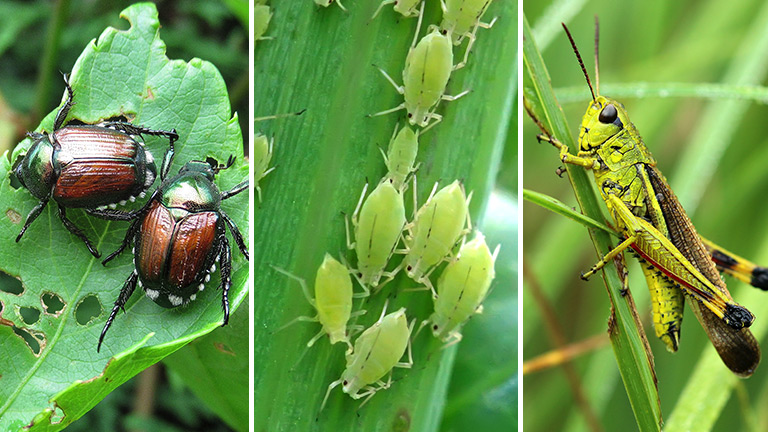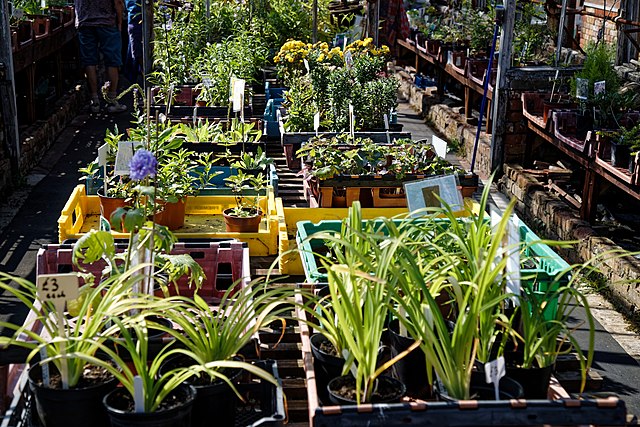With soil preparation, careful selection of plants, and consistent efforts in watering and feeding of the jewel of earth we call our garden, we hope to be rewarded with luscious greens, sweet fruits, and gorgeous flowers every season, only to repeat the process again each year.
But even some experienced gardeners may not be taking advantage of nature’s little helpers in their gardens: the good bugs that enhance and improve a garden. But knowing which bugs are beneficial to your garden is just as vital as all of the planning that goes into a successful garden. Let’s look at some of the most important insects you want to see in your garden as well as a few to avoid.
Bugs That Pollinate
Even non-gardeners know about the majestic and hard-working bee (anthophila) that transfers pollen dutifully from one flower to another, crisscrossing the landscape to ensure that blooms will show up year after year on our flowers. But they are not the only pollinators we want to have in our gardens.
Monarch butterflies (Danaus plexippus)
Stunning in their final phase as winged creatures, hardworking butterflies can assist the humble bee in transferring pollen between flowers in a garden. With their prized coloring, monarchs are perfect additions to add into the garden for their delicate beauty.
The caterpillar phase of the monarch is a voracious eater of the common milkweed, a plant prized for being a strong food source for valuable bugs in every gardenscape.
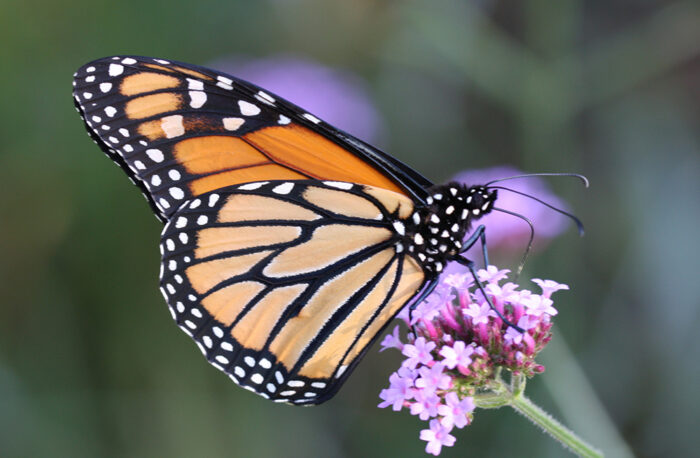
Good Bugs That Eat Bad Bugs
Another type of beneficial bug is the predator. Just like in the animal world, these bugs eat or kill specific unwanted bugs that live in your garden. Introducing these predator bugs, or at least taking care not to remove them, allows them to do their important work in the garden of minimizing the bad bugs you just don’t want or need around your plants.
Ladybugs (Coccinnellidae)
The much-loved red ladybug is a hard worker in the garden. Charming to look at in their adult red coloring, as larvae they can consume an astonishing 40 aphids an hour. Once they reach their adult stage, they continue to feast on pesky aphids that literally suck plants dry when left unchecked in a garden. These pretty ladies also munch on caterpillars and mealybugs, among other plants, and will even consume pollen if they are unable to find a bug to eat.
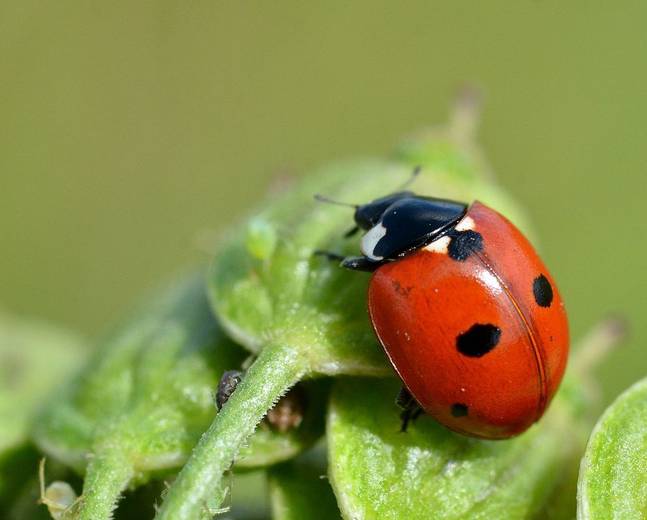
Lacewings (Chrysopidae)
Hungry predators who gobble up mites and aphids under cover of darkness, the delicately named lacewing is actually a bright green winged bug when it reaches adulthood. Larvae are strategically placed in aphid nesting areas, so they have a constant food supply.
As adults, the lacewing’s tastes turn more to sweeter pollens and nectars but having their larvae around to control aphids is a perfect use of this hungry and beneficial bug. These essential garden critters could be categorized as predators or as parasitic, since they have characteristics of both types of beneficial bugs.
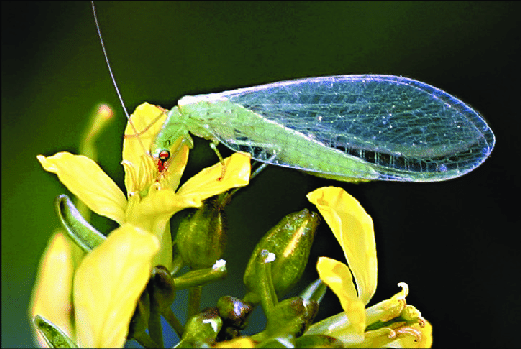
Soldier beetles (Cantharidae)
Another ravenous predator, this beetle eats up destructive bugs both during its youth and adult stages. As a young beetle, it preys upon larvae of grasshoppers and moths. But as an adult, using brightly colored flowers as camouflage, aphids and caterpillars are no match for the patient soldier beetle.
While it looks quite ferocious, this handy bug is a great friend to your garden’s tender plants that are often a meal by invasive pests.
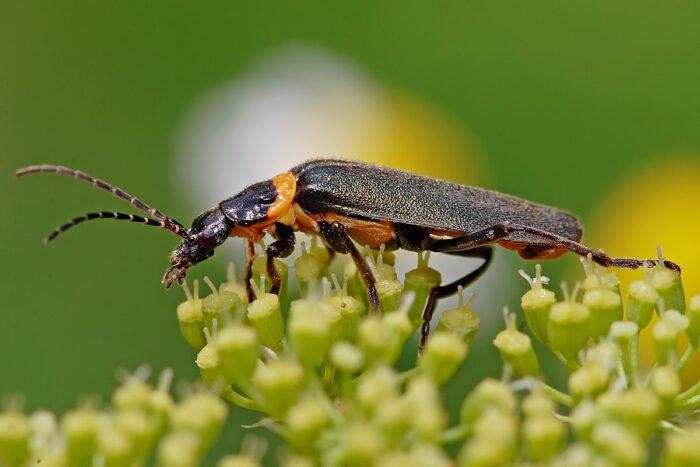
Dragonfly (Anisoptera)
These iconic beauties live near water, so garden water features and gardens with nearby streams or bodies of water will benefit from their presence. The adult dragonfly is an insatiable predator that feeds on flies, gnats, and mosquitos, all pesky intruders in a garden and to the gardener as well. But as larvae, these life-long carnivores also consume just about any living waterborne thing smaller than they are, including bloodworms and other insect larvae.
Their partners, called Damselflies (Zygoptera), will defend the eggs and larvae together with the dragonfly, creating a beneficial family unit near watery garden areas.
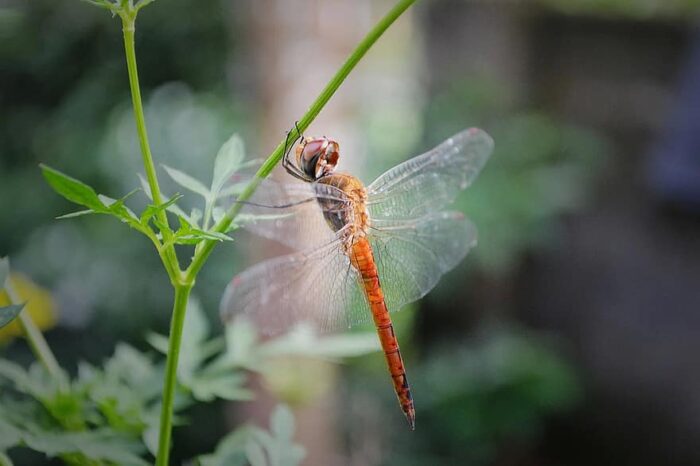
Parasitic Bugs
These crafty beneficial insects are similar to predator bugs in that they both devour bad bugs in some way. While predators tear directly into an insect, a parasitic type follows a lengthier method to rid your garden of troublesome pests.
The parasite lays its eggs in or on another insect. Once hatched, the larvae consume the host as a primary food source, strategically providing a consistent food for the growing bug.
Braconid wasp (Braconidae)
This scary looking bug is actually one you want to have around your garden as it feasts primarily on the tomato hornworm. Smaller than a regular wasp, the braconid lays its eggs on the hornworm but will completely consume it through the lifecycle of the wasp.
They also act as pollinators, but since their legs are sleeker and don’t have the fuzzy texture that other pollinators do, the braconid acts primarily as a parasite as it assists the gardener with the populations of hornworm, aphids, stink bugs, and squash bugs, among the many food sources loved by this tiny wasp.

Trichogramma wasp (Trichogrammatidae)
Even smaller than the braconid, these minute parasites fully develop inside insect eggs, emerging as they eat their way to freedom. Once grown from larvae, these tiny wasps look for a new host to start the process over again, ridding gardens of a multitude of insects before they are even born.
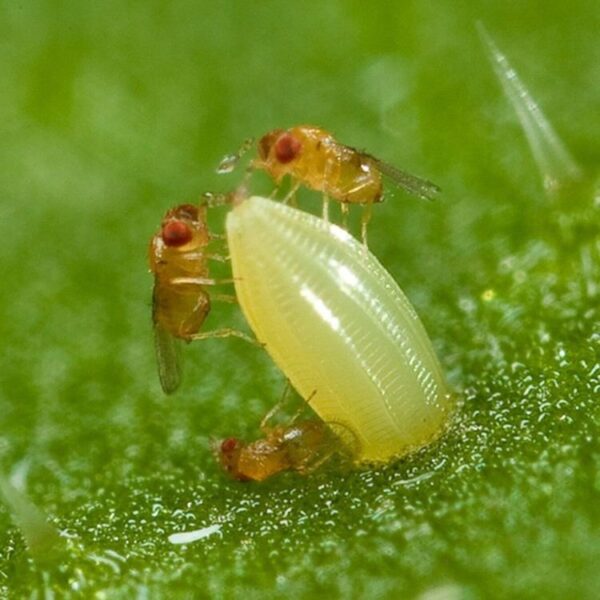
Common Garden Bugs to Avoid
Just like some bugs are our garden friends, there are a few bugs that should be removed from your garden area as soon as they are noticed. A few to watch out for:
- aphids love to suck nutrients out of all kinds of plants
- cutworms can devour new plantings rapidly
- Mexican bean beetles look like yellow Ladybugs but devour many vegetables
- Japanese beetles can completely defoliate plants as adults while their larvae can destroy grass and plant roots
